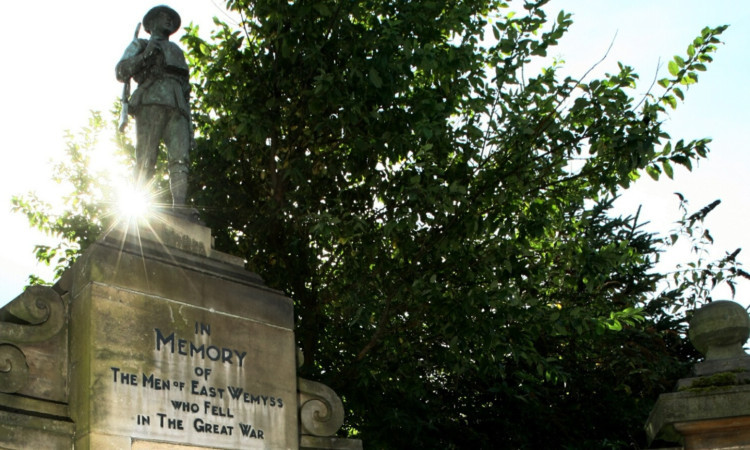A poignant rededication ceremony was held at East Wemyss war memorial to mark the return of a statue of a First World War soldier.
Local dignitaries, councillors and members of the community turned out in their droves for the service conducted by the Rev Wilma Cairns, who thanked the media and the public for helping to find the First World War statue, known locally as “Jimmy”.
It was snatched in June and later discovered by the entrance to Kirkcaldy’s Hayfield Cemetery by a member of the public who recognised it from media reports and called the police.
Once identified, steps were taken by Fife Council’s building services team to fit it back on to the war memorial more securely.
Those attending Thursday’s ceremony included Fife Black Watch Association chairman Rob Scott, Fife Provost Jim Leishman, Lord Lieutenant of Fife Margaret Dean and various members of the Royal British Legion. Bagpipe music was provided by Matthew Clarke from Methilhill Pipe Band.
Mr Leishman said: “I am delighted to see Jimmy back where he belongs and know the whole village feels the same way.
“The service was a very poignant one and provided a chance for people to take time to reflect on all those we lost during the wars and pay their respects.”
Mr Scott, who previously likened the theft to “desecrating hundreds of graves”, said he hoped the case would help increase awareness about the sacrifices made by previous generations in the world wars.
“It was good to see so many people turning out to pay their respects and see it returned to its rightful spot,” he added.
Councillor Jim Young said: “It was a poignant service and lunch was very kindly laid on afterwards for all who attended at the Central Hotel.”
This is the second time in the statue’s 92-year history that it has had to be returned to the memorial after being stolen. In the mid-nineties the statue went missing for several years before it was discovered by police raiding a house in Halifax.
The memorial, erected in the twenties, is inscribed: ‘In memory of the men of East Wemyss who fell during the Great War.’
It bears the names of 70 local men killed in the First World War, 28 who fell in the Second World War Two and one name that has been added since.
